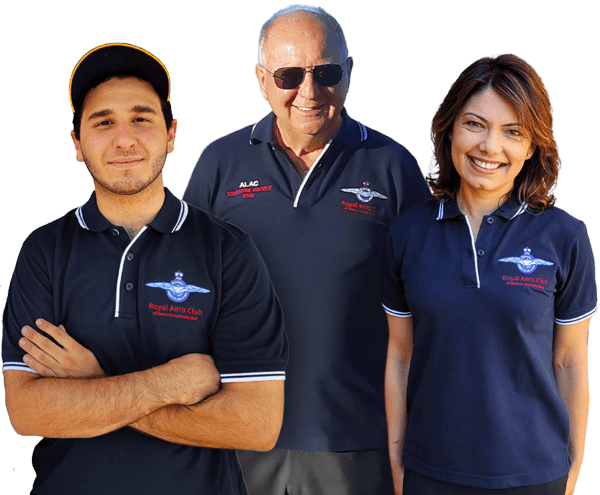Aviate – Navigate – Communicate – we all know the saying and at some point, most of us have had an instructor tell us to focus on flying the aircraft and worry about the radio later. Communication is quite rightly the lowest priority of those three, but it is still very important. Often there is plenty of activity on the radio but not necessarily much effective communication happening.
I observed the following recently while conducting a PPL flight test – as an examiner my role was to observe, assess and only intervene if the safety of the flight became compromised, so as all this unfolded I was biting my tongue to stop myself from interfering unless I really had to.
The situation – we were approaching Northam from the southwest, inbound for circuits. “Bloggs”, the pilot I was assessing was monitoring the Northam CTAF prior to making an inbound call. YHJ made a position broadcast in the circuit at Northam for a touch-and-go. Bloggs made an inbound call & shortly after BRE also made an inbound call stating they were out to the Northeast with an estimate for the circuit area within 2 minutes of our arrival. That was followed by Sportstar 5519 making a call that they were on the ground and taxing for a departure. It was starting to get busy. Next thing over the radio “Narrogin Traffic ZEF, 10 miles to the southeast 2500’ inbound for circuits time 43, Narrogin”
Bloggs says “What? Wait – did he say Narrogin? But this is Northam. Also, that time is pretty close to our arrival.” It was clear Bloggs had no idea whether ZEF was about to join us at Northam and just messed up the call (places starting with “N” are pretty much all the same) or was going to Narrogin and no risk to us (but potentially joining traffic in a circuit on the wrong frequency). I had no idea either. If only there was some device in the cockpit that could be used to clarify the situation…..
Crickets.
Neither Bloggs nor the pilot of BRE, due to arrive at around the same time & therefore was potentially exposed to the same (warning overt use of CASA terminology here) THREAT as us contacted ZEF. Neither did either of the other two aircraft already at Northam. Sure Bloggs was nervous and probably wasn’t confident to point out someone else’s mistake (hey we all make them & Bloggs was on a flight test). Maybe Bloggs and the other pilots didn’t want to be that smart alec that says “Duh, mate you’re on the Northam CTAF, not Narrogin you muppet!” But how about “ZEF would you please confirm whether you are inbound to Northam or Narrogin” is less confrontational and would have clarified the situation, for everyone. Something 4 different pilots that probably heard the call didn’t attempt to do.

As we got closer to the field I could see an aircraft coming from the northeast, roughly where I expected BRE to be. My eyes were on stalks looking at the other aircraft, unsure whether they were even going to be there. Eventually, an aircraft did appear from the south east.
ZEF made 2 additional broadcasts to “Narrogin Traffic” before “Narrog – wait, oh whoops, I mean Northam Traffic ZEF joining midfield crosswind rwy 32 Northam”. Now I don’t know if they looked down and read NORTHAM in big letters on the roof of the hangar heard everyone else saying it on the radio, or just worked it out themselves. But they received no help from the other (potentially affected) aviators in the vicinity.
Bloggs still had to get our aircraft safely into the circuit with all that traffic. The plan was to follow BRE which was now descending on the dead side for a midfield crosswind join. Bloggs made the call “Narrogin Traffic Charlie Alfa Romeo, overhead 2000’, descending on the dead side for runway 32, aircraft on the dead side I have you sighted and will follow you.” OK, so Blogs didn’t know the callsign was BRE, so not perfect, but it was finally some EFFECTIVE communication. The other pilot now knew they had been seen and knew Bloggs was going to manoeuvre to stay behind them.
Some tips for effective communication on the radio:
- LISTEN – actively listen to what is being said on the radio. What is the callsign of the station talking? Where are they? What height? What direction or where are they going? Does the message affect you? Don’t just disregard a call if it doesn’t include your callsign.
- SPEAK UP if required – If there is ambiguity or confusion about what you hear on the radio clarify it.
- THINK – about what you are going to say before you press the mic. Think about whether someone hearing the broadcast will have enough information. Remember PTT is Push TO Talk, not Push To Think.
- KNOW – and use correct phraseology where possible – it tends to be shorter, more precise and doesn’t clog the airwaves as much as plain English, however, plain English is OK for non-standard exchanges or I you are unclear on phraseology. Structure your calls :
- Who – who am I? Who am I talking to? ATC or CTAF Traffic or a specific aircraft?
- Where – location over the ground AND altitude above it.
- What – is the message or information you want to convey?
- WRITE notes – The callsigns in the story above were all written down at the time I first heard them, not a chance I could remember them while we were at Northam let alone afterwards while writing this. But with them written down, it helped with situational awareness of who was where and what they were doing.
Tim Berryman
Flight Instructor
Photo by Necati Ömer Karpuzoğlu: https://www.pexels.com/photo/pilot-sitting-in-airplane-cockpit-26319144/


